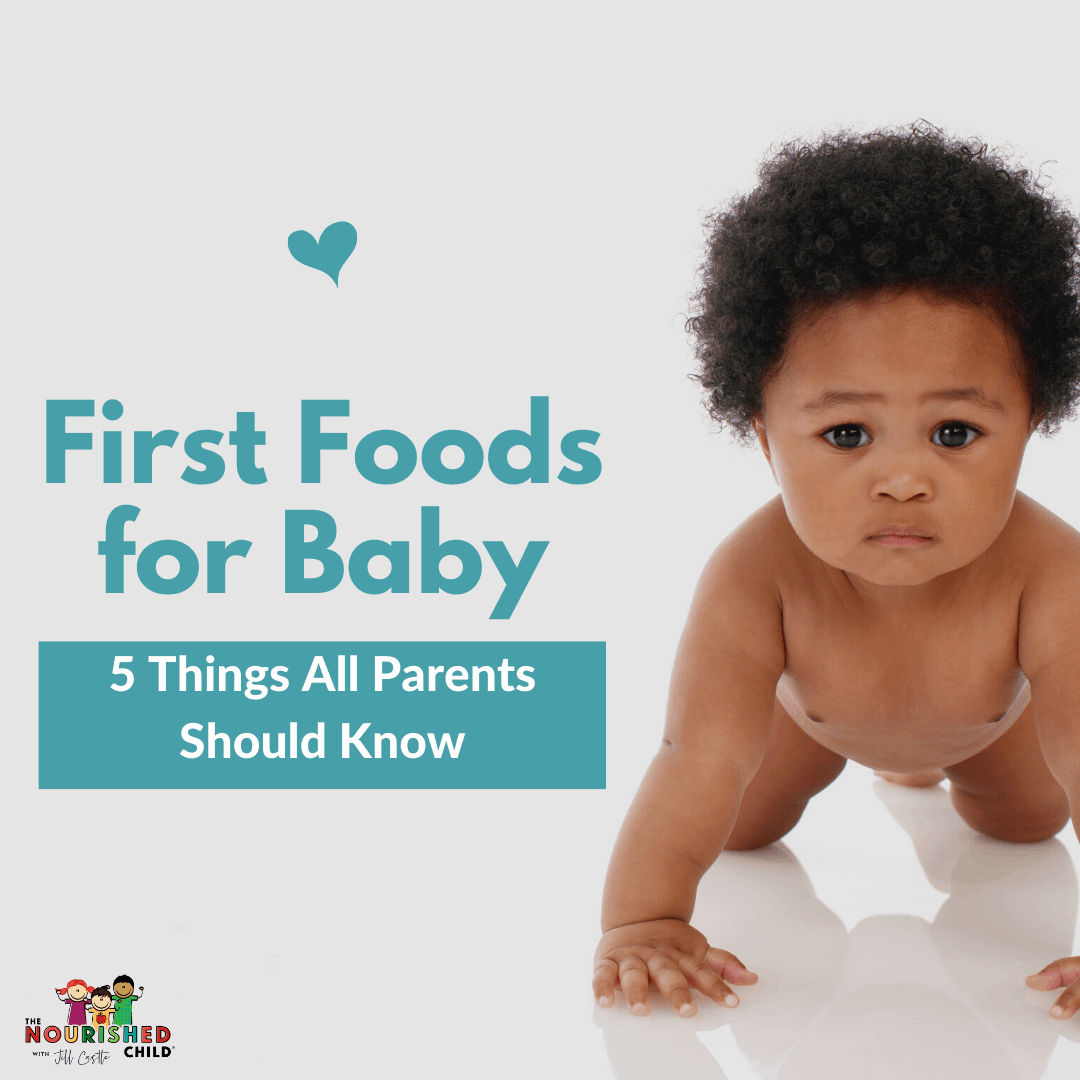The 90 – 10 Rule for Sweets and Treats
October 8, 2020
Learn how to balance sweets and treats using my 90 – 10 Rule for Food.
By far one of the most popular concerns parents have today is around managing sweets and treats in their children’s lives. Fun Foods, as I like to call them, are those sugary, sweet or high fat fried foods (or sometimes both!) that are prevalent in our children’s modern-day diet.
I use the 90 – 10 Rule to help families put sweets and treats in their place.
And it’s pretty effective.
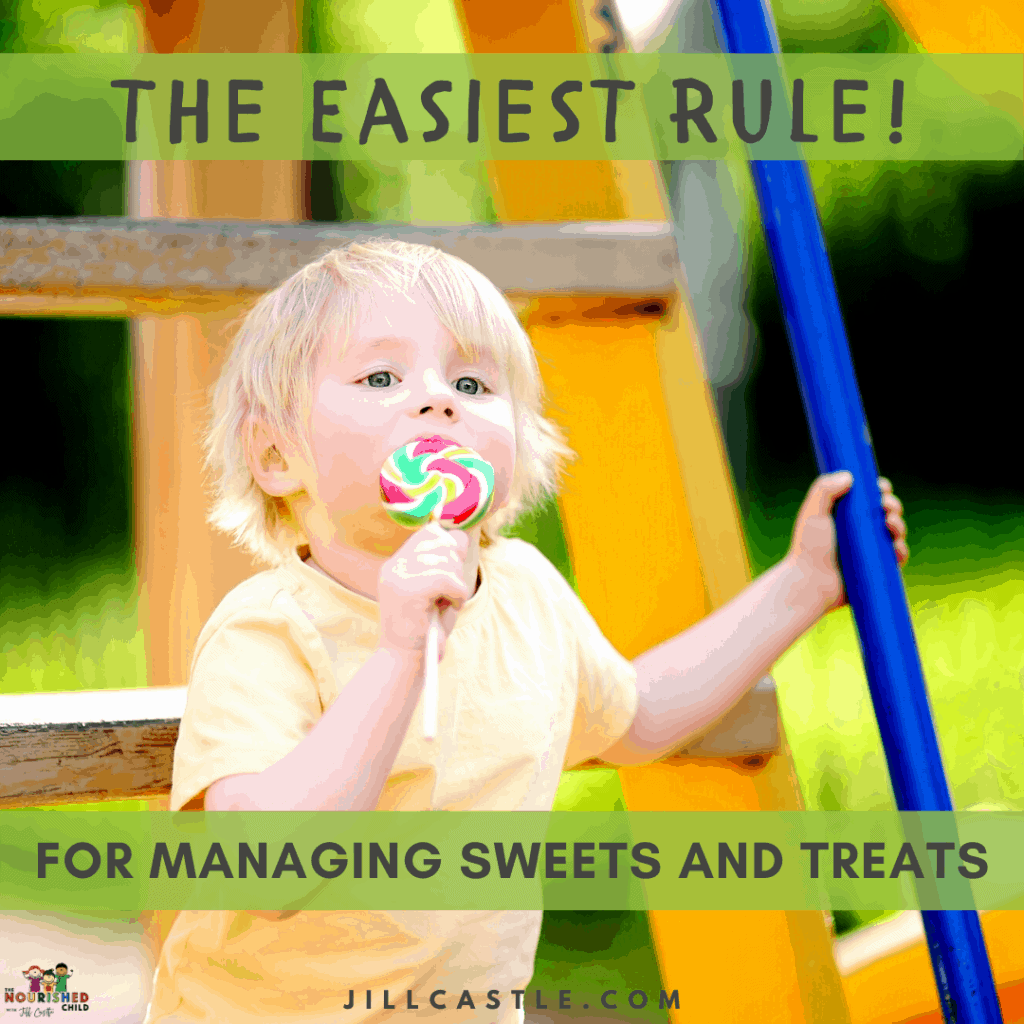
What are Fun Foods (Sweets and Treats)?
Fun Foods are those foods that contain high amounts of sugar or fat, and as a result, calories. They are yummy, attractive, and sometimes irresistible.
The are high in flavor, and low in nutrition. They’re sweets and treats such as birthday cake, cupcakes, cookies, soda, candy, chips and fried foods.
Fun Foods can be problematic in a child’s diet because they may tip the diet to the unhealthy side if too many are consumed regularly. Because they’re generous in calories and a poor source of nutrients, some parents may think they need to be wiped out of a child’s diet, but that doesn’t really work either.
Tightly controlling sweets and treats can backfire. Children can perceive this approach as being too restrictive, and this may lead to sneaking food, and overeating it when the opportunity arises.
What is the 90 – 10 Rule for Food?
Many kids can’t get through the day without getting offered treats. These foods show up at school, on the athletic fields, at church, friend’s houses, and more.
Quite honestly, kids and their parents need an easy way to manage these foods in the diet.
The 90 – 10 Rule helps separate nourishing foods, which are those foods that are nutritious and help to make up a balanced diet for kids, from Fun Foods.
The 90 – 10 Rule makes it easy to sift through foods, categorize them, and decide the what, where and when of eating Fun Foods.
Food balance is easily achieved, resulting in a healthy diet that maximizes nourishing foods and moderates indulgent ones.
The best part? Kids are able to grasp this concept and begin using it.
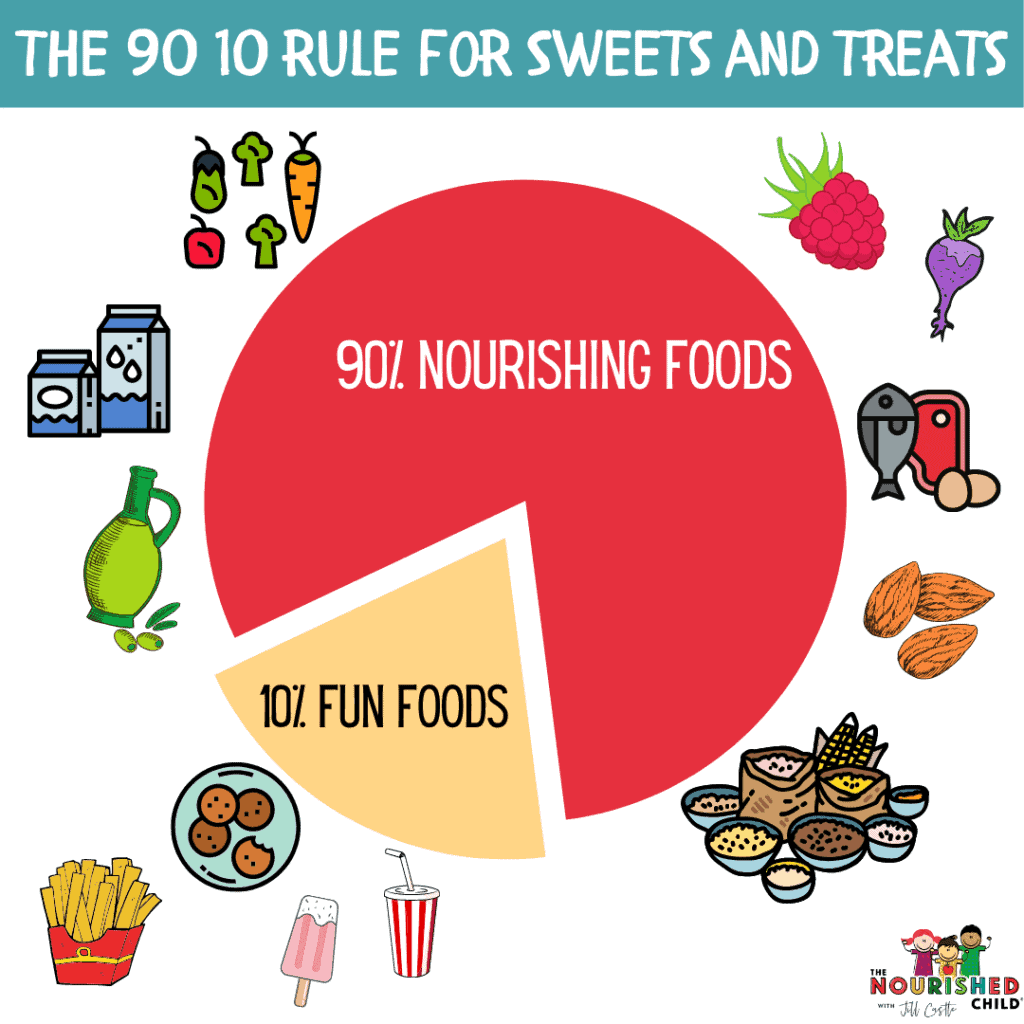
Managing Sweets and Treats in Kid’s Diets
The 90 – 10 Rule is a concept that I developed in my work with families in my practice. I developed it to help families who were working on healthier eating.
Families found it helpful, easy to understand, and practical to put into place. Kids could easily grasp the concept and begin to make thoughtful decisions about which Fun Foods they would eat, and when they would eat them.
Here’s how you can put the 90 – 10 Rule in action for your family:
Step One: Choose Mostly Nourishing Foods
Understand which foods are Nourishing Foods. Nourishing Foods come from the MyPlate guide, including:
- Lean protein sources such as egg, beef, chicken, lamb, and beans
- Dairy products such as milk, and milk products like yogurt
- Fruit
- Vegetables
- Whole grains such as whole wheat bread, whole grain cereal, pasta and rice
Step Two: Plan Meals and Snacks
Plan meals and snacks to include mostly these foods.
Ninety percent (90%) of your child’s food consumption during the day should come from nourishing foods.
Step Three: Identify Sweets and Treats (AKA Fun Food)
Identify the Fun Food in your child’s diet, including:
- desserts
- candy
- sugary beverages
- fried food such as chips or French fries
Step Four: Determine the Food Balance
Determine with your child which Fun Foods will be eaten and when they will be eaten.
10% of what your child eats during the day, on average, comes from Fun Food. For most healthy kids, this ends up being 1 to 2 Fun Foods, on average, each day.
The Goal: 90 percent Nourishing Foods + 10 percent Fun Foods
Real Life Scenarios Using the 90 – 10 Rule
When you start using the 90 – 10 Rule, make sure your child understands which foods fall into the Fun Food category and which foods he should be eating most of the time. One key here is to let your child choose which Fun Food is important to him when possible.
This builds autonomy, letting your child have a say in the matter.
For example:
Will your child choose the soda at the school play, or the ice cream afterward? Encourage her to choose the Fun Food that is most desirable and meaningful for her.
Let’s explore how this could play out:
Sally knows that she will have the opportunity to have donuts after church on Sunday, as well as cake and ice cream at the afternoon birthday party she is attending. Following the 90 – 10 Rule, she opts for cake and ice cream at the party and skips the donuts at church.
Brent is playing baseball this afternoon and as tradition has it, he grabs a slushy drink. He passes on the bowl of ice cream later that night, remembering he chose his Fun Food earlier at the ballpark.
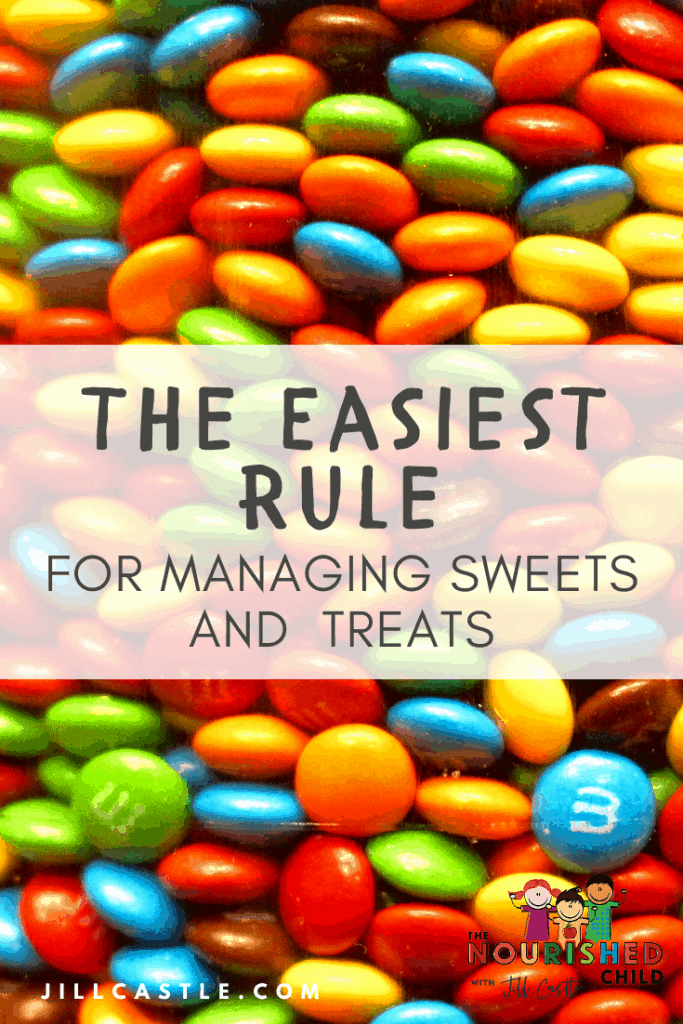
Wouldn’t It be Easier to Get Rid of Sweets and Treats?
As parents, we know there are endless options for treats, sweets and snacks throughout the day.
Eliminating them is not practical, reasonable or effective. As I mentioned earlier, food restriction, or tightly controlling food, is a negative feeding practice.
Research tells us that some children may become more responsive to restricted foods, potentially sneaking or overeating them when they have the opportunity to do so.
Balancing Fun Food with a diet full of nutritious food is really the key to healthy eating. It’s the best of both worlds — balanced, nutritious food for growth, development and health plus indulgent food to satisfy desire and help children learn to navigate these foods in their diet.
Sweets and treats, sugary drinks, and fried foods are not going to disappear. They are prominent in our modern world and they will continue to be.
While you may try to control treats or your child’s eating, it’s likely you’ll soon find that you’re struggling with your child over food.
The Benefits of Limits for Sweet Treats
Not only does the 90 – 10 Rule curb the unhealthy foods in your child’s diet, it also empowers her to make choices and self-regulate the amount of less-than-healthy foods she eats.
The goal is to help your child pause and think through what she will eat during the day, and give her an opportunity to think ahead and practice decision-making skills with eating.
This means you are shifting a bit of the food decision-making over to your child, in an area that may be most difficult for you and her to manage single-handedly.
Kids are black and white thinkers, and the 90 – 10 Rule aligns with their thought processes. Kids are able to identify Fun Food quite easily (and we don’t use judgmental names like this is “bad” or “toxic” food).
They can make choices about which Fun Foods they want to eat, and fully enjoy their treats.
I’ve seen kids implement the 90 – 10 Rule and manage Fun Food well.
Have you tried the 90 – 10 Rule? How did it go?
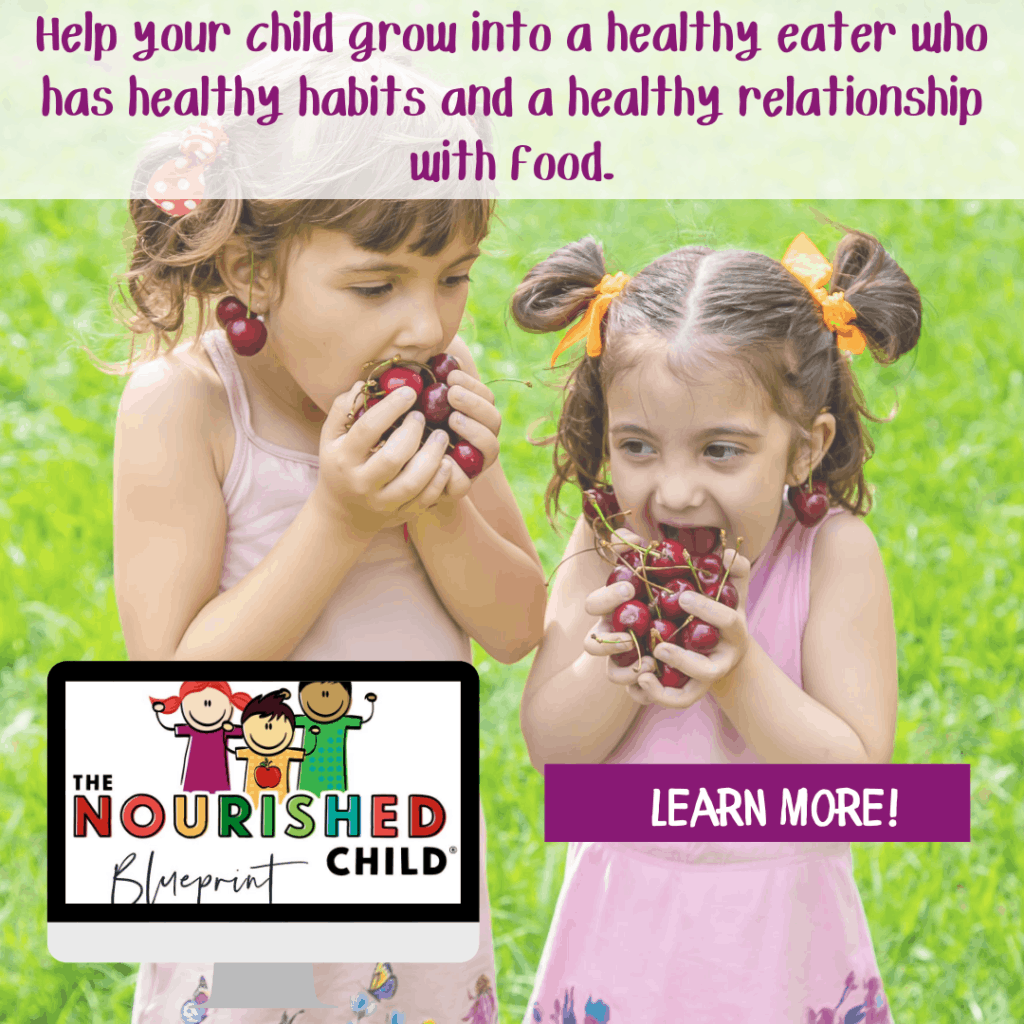
Need More Help with Feeding Your Child?
Check out our on demand library of workshops, classes and guidebooks to help you feed better so your child can eat better.
This article was updated from its original in October 2020.


